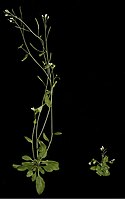
Photo from wikipedia
Substance use disorders for cocaine are major public health concerns with few effective treatment options. Therefore, identification of novel pharmacotherapeutic targets is critical for future therapeutic development. Evolution has ensured… Click to show full abstract
Substance use disorders for cocaine are major public health concerns with few effective treatment options. Therefore, identification of novel pharmacotherapeutic targets is critical for future therapeutic development. Evolution has ensured that genes are expressed largely only where they are needed. Therefore, examining the gene expression landscape of the nucleus accumbens shell (NAcSh), a brain region important for reward related behaviors, may lead to the identification of novel targets for cocaine use disorder. In this study, we conducted a novel two-step topographic transcriptomic analysis using five seed transcripts with enhanced expression in the NAcSh to identify transcripts with similarly enhanced expression utilizing the correlation feature to search the more than 20,000 in situ hybridization experiments of the Allen Mouse Brain Atlas. Transcripts that correlated with at least three seed transcripts were analyzed with Ingenuity Pathway Analysis (IPA). We identified 7-fold more NAcSh-enhanced transcripts than our previous analysis using single voxels in the NAcSh as the seed. Analysis of the resulting transcripts with IPA identified many previously identified signaling pathways such as retinoic acid signaling as well as novel pathways. Manipulation of the retinoic acid pathway specifically in the NAcSh of male rats via viral vector-mediated RNA interference targeting fatty acid binding protein 5 (FABP5) decreased cocaine self-administration and modulates excitability of medium spiny neurons in the NAcSh. These results not only validate the prospective strategy of conducting a topographic transcriptomic analysis, but also further validate retinoic acid signaling as a promising pathway for pharmacotherapeutic development against cocaine use disorder.
Journal Title: Neuropharmacology
Year Published: 2021
Link to full text (if available)
Share on Social Media: Sign Up to like & get
recommendations!